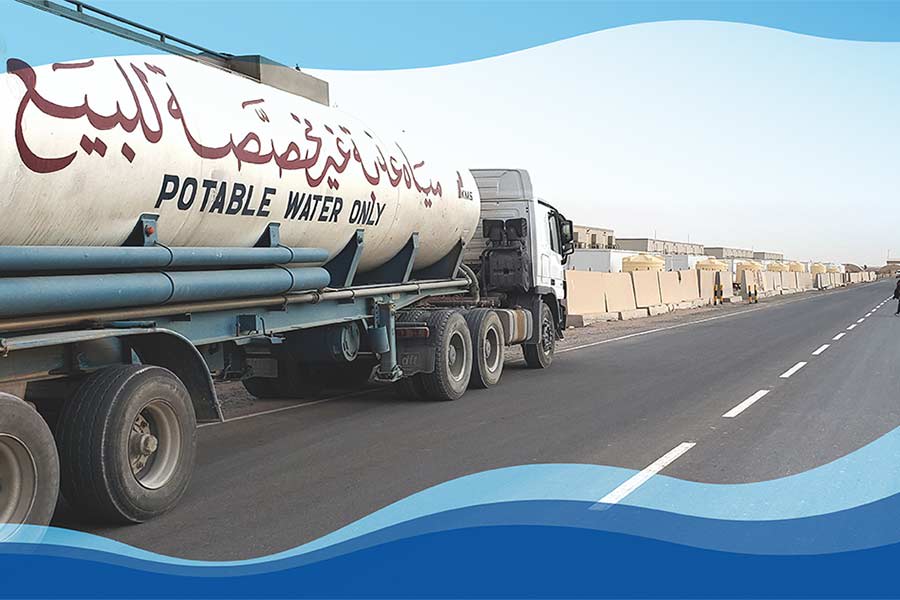INL’s Smart Water System: Boosting Resilience at Camp Buehring

In the harsh desert environment of northern Kuwait, Camp Buehring, a U.S. military base located just 20 miles from the Iraqi border, has long grappled with one of the most fundamental challenges: access to water. With no natural sources like wells or rivers nearby, the base must rely on water trucked in for daily use, including drinking, showering, and sanitation. In a region where annual rainfall rarely exceeds six inches and summer temperatures can soar above 115 degrees Fahrenheit, ensuring a reliable water supply is not just a matter of convenience—it’s a necessity for operational success and troop safety.
Recognizing this pressing need, researchers from the Idaho National Laboratory (INL) launched an initiative aimed at enhancing water resilience at the base. The project was part of a broader Department of Defense (DOD) effort to improve energy efficiency and self-sufficiency across U.S. military installations abroad. Jeremiah Gilbert, a distributed energy power systems engineer at INL, explained that the team’s primary objective was to develop a sustainable way for troops to recycle and reuse water, thereby reducing dependency on costly external supplies.
“Every drop of water used by the soldiers has to be brought in,” Gilbert said. “That can get really expensive, especially when you factor in logistics and transportation. We wanted to find a way to help them recycle water so they could operate more independently.”
As part of their assessment of two bases in the region, the INL team identified several opportunities to reduce both energy consumption and operating costs. One of the most promising solutions involved installing a water reclamation system (WRS)—a technology designed to treat and reuse non-potable water for secondary purposes such as toilet flushing and dust control.
Mike Shurtliff, the project manager and a systems research engineer, emphasized the importance of reusing water within Army guidelines. According to regulations, all water provided to troops must come from controlled and tested sources. Much of Kuwait’s water comes from desalination plants, which already undergo rigorous testing before being approved for use.
“The key to improving resilience was to make better use of the water they were already using once,” Shurtliff explained. “Our idea was to collect water from showers and sinks, clean it up, and then use it again—for toilets, for example.”
The system they proposed would capture what’s known as gray water—wastewater from sinks, showers, and similar sources, which typically contains mild contaminants like soap and detergent. This gray water is separated from black water, which includes human waste and requires more intensive treatment. By keeping these streams separate, the process remains efficient and manageable.
The team collaborated with Greyter, a company experienced in residential water recycling, to acquire a base filtration unit. To ensure the system could be deployed quickly and efficiently, they worked with Diversified Inc., a local Idaho Falls firm, to design a portable container to house the WRS. This transportable solution allowed the system to be shipped directly to Camp Buehring and installed with minimal disruption.
However, the implementation faced unexpected hurdles. The arrival of the WRS coincided with the global outbreak of the COVID-19 pandemic, which led to travel restrictions and delayed on-site support. During shipping, chlorine tablets meant for disinfecting the system were improperly sealed, causing widespread corrosion inside the container. Despite these setbacks, the team managed to repair the damage and install the system successfully.
The system now works by collecting used water from showers and handwashing stations, filtering it through multiple stages, adding chlorine, and exposing it to ultraviolet light for additional purification. The resulting reclaimed water is stored and used for toilets, plant irrigation, and dust suppression. All wastewater from toilets is then sent off-base for final treatment in a man-made lagoon.
Since its installation, the WRS has proven highly effective. The Army has taken over maintenance, and discussions are underway about expanding the system’s capabilities to produce potable water. For INL, the success of the project serves as a model for future deployments aimed at increasing resource independence across military installations worldwide.
“Our hope is that this demonstration will pave the way for many more projects like it,” Shurtliff said. “This kind of innovation supports the DOD’s broader mission of making bases more resilient and self-reliant.”
Post a Comment for "INL’s Smart Water System: Boosting Resilience at Camp Buehring"
Post a Comment